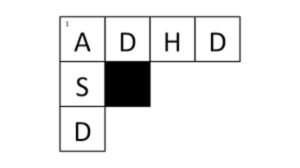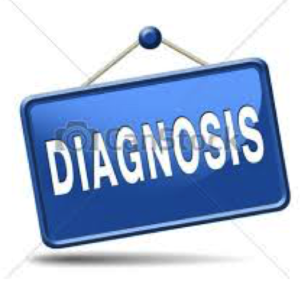 Background
Background
In the last decade, the field of study regarding the co-occurrence of autism spectrum disorder (ASD) and attention deficit hyperactivity disorder (ADHD) has grown significantly due to the release of the DSM-V in 2013, where a dual diagnosis of these two conditions became possible. Prior to 2013, the DSM-IV said an ASD diagnosis restricted an additional diagnosis for ADHD, which limited any research on the co-occurrence of these two conditions for many years. Now, with this change, scientists can now put forth resources to enhance the scientific community’s understanding of the etiology and therapeutic interventions for this dual diagnosis.
How are these conditions similar?
 ASD and ADHD are both developmental conditions that begin in early adolescence and persist across development. The defining characteristics of both conditions include difficulties in attention, communication with peers, impulsivity, restlessness or hyperactivity, as well as a strong comorbidity with intellectual disabilities. There is a belief that these two conditions share a common underlying etiology stemming from the statistic that “about 50-72% of the contributing genetic factors in both disorders show overlap”. This statistic reveals the genetic pre-disposition of both conditions.
ASD and ADHD are both developmental conditions that begin in early adolescence and persist across development. The defining characteristics of both conditions include difficulties in attention, communication with peers, impulsivity, restlessness or hyperactivity, as well as a strong comorbidity with intellectual disabilities. There is a belief that these two conditions share a common underlying etiology stemming from the statistic that “about 50-72% of the contributing genetic factors in both disorders show overlap”. This statistic reveals the genetic pre-disposition of both conditions.
How do these similarities impede a diagnosis of the latter?

Since the characteristics of these two conditions overlap significantly, a diagnosis of ADHD has been shown to significantly delay the recognition of ASD in adolescents. In a study done at Boston Children’s Hospital, researchers examined data from the National Survey of Children’s Health on nearly 1,500 adolescents, ages 2 to 17 with ASD. Through this study, the researchers found that approximately 1 in 5 children diagnosed with ASD had an earlier diagnosis of ADHD. Furthermore, these children who received a prior diagnosis of ADHD were diagnosed three years later than the children who were diagnosed with ASD without a prior ADHD diagnosis. These findings offer support that symptoms of ADHD may impede the recognition of ASD by caregivers, teachers, and clinical care physicians. Hence, it is imperative to develop a better screening process so that children can receive adequate resources earlier on so they can prosper in their environments.
What interventions should individuals with both of these conditions consider?
 Many studies suggest combining medication with interventions that educate parents. For the ADHD side, parents are taught how to manage their child’s behavior, and for the ASD side, parents are introduced to individual treatments that promote the development of the child’s social skills. The results of this arrangement indicated lowered rates of aggression and greater reduction in hyperactivity compared to adolescents who only took medications. For the future, there should be increased research on early identification and intervention strategies, even before pathophysiology is fully understood.
Many studies suggest combining medication with interventions that educate parents. For the ADHD side, parents are taught how to manage their child’s behavior, and for the ASD side, parents are introduced to individual treatments that promote the development of the child’s social skills. The results of this arrangement indicated lowered rates of aggression and greater reduction in hyperactivity compared to adolescents who only took medications. For the future, there should be increased research on early identification and intervention strategies, even before pathophysiology is fully understood.
Speak Your Mind